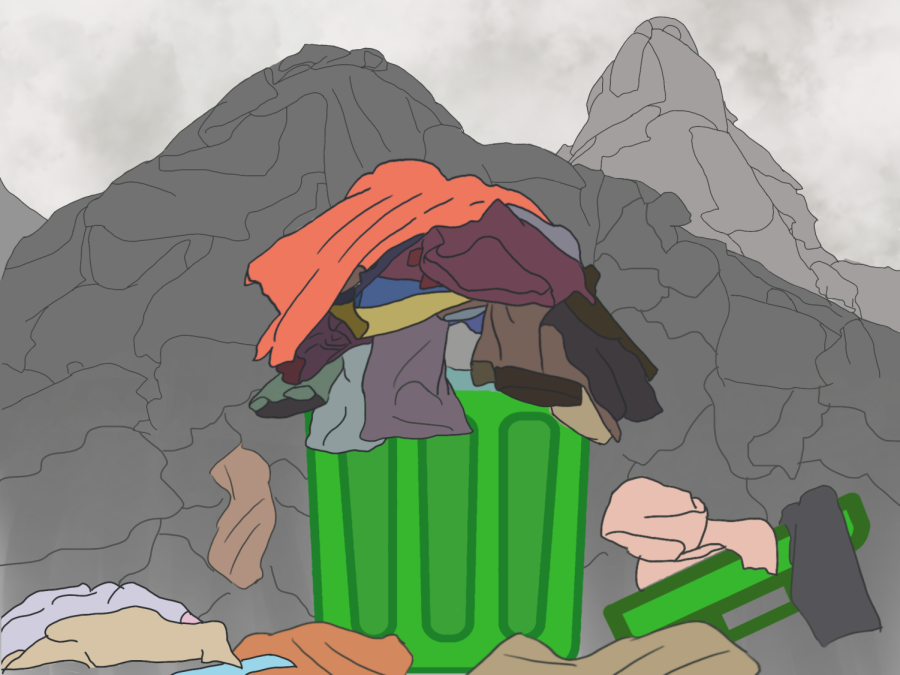Overconsumption is Ruining The Environment
While fast fashion is an affordable option for many people, it can lead to harmful environmental consequences.
The aisles are crowded with a chaotic array of trendy styles in a variety of colors and textures. The strong odor of synthetic fabric fills the air. These toxic textiles are the result of fast fashion industrial products.
Fast fashion’s dangers to the environment and ecosystem have increased significantly. It is no secret that fast fashion companies are looking to make, profit and the shift towards institutional sustainability seems far.
To limit the environmental impacts of fast fashion, worn out clothing should be appropriately recycled, and consumers should care for and repair clothes to extend their lives.
Most clothing that is discarded is barely worn, and less than one percent of clothing is recycled into new garments, according to the World Bank,
Physics and engineering teacher Anthony Pham tackles the negative long term impacts of fast fashion on human health and the environment.
“All these plastics, and just like pollution, it gets back to the animal and the things we consume,” Pham said. “So not only is it not helpful for the environment long term, it will affect all of us as well.”
When discarded garments are left to disintegrate, they undergo a process in which clothing is compacted beneath layers of waste where bacteria and microorganisms thrive. As they break down, a variety of greenhouse gasses are produced, contributing to global warming, according to Planet Aid.
The long-term consequences of fast fashion come at the expense of humanity’s future health, polluting the air, water and food.
While working at a thrift store, senior Katelyn Toulmin noticed the impacts of overconsumption.
“It almost scares me how big it is right now,” Toulmin said. “I observed especially at school that there’s a bunch of micro trends going on. So it’s almost like, everyone has something going on in the fast fashion world.”
It seems like the wisest course of action is to explore personal style through thrifting and eco-friendly stores, but the reality is sustainable brands are expensive, and thrifting requires significant effort.
“Fast fashion is a very controversial topic because a lot of people are like, ‘Oh, no fast fashion is bad,’” junior Sahiba Sayed said. “But in reality, I feel like fast fashion is the more affordable choice because realistically, not everyone can afford super clean brands that are good for the environment. The younger generation- a lot of us don’t have our own source of income, and we mostly depend on our parents. So fast fashion is a cheaper alternative to buy our own stuff.”
Even so, shopping in fast fashion should be limited. Cheaper alternatives could be exchanging clothing, buying second hand and renting special event outfits.
Sustainability is not only up to the producers but also to consumers and how they choose to care for their garments. A move away from trendy fashion and toward more durable clothing can help reduce overconsumption.
Your donation will support the student journalists of Portola High School. Your contribution will allow us to purchase equipment and cover our annual website hosting costs.

Jana Malek is a staff writer for the Portola Pilot. She is excited to spend her final year running around with a camera behind deadline. When she's not...

Claire Chan is the front page editor and news photo editor for her second and final year on the Portola Pilot. She is looking forward to making the best...




